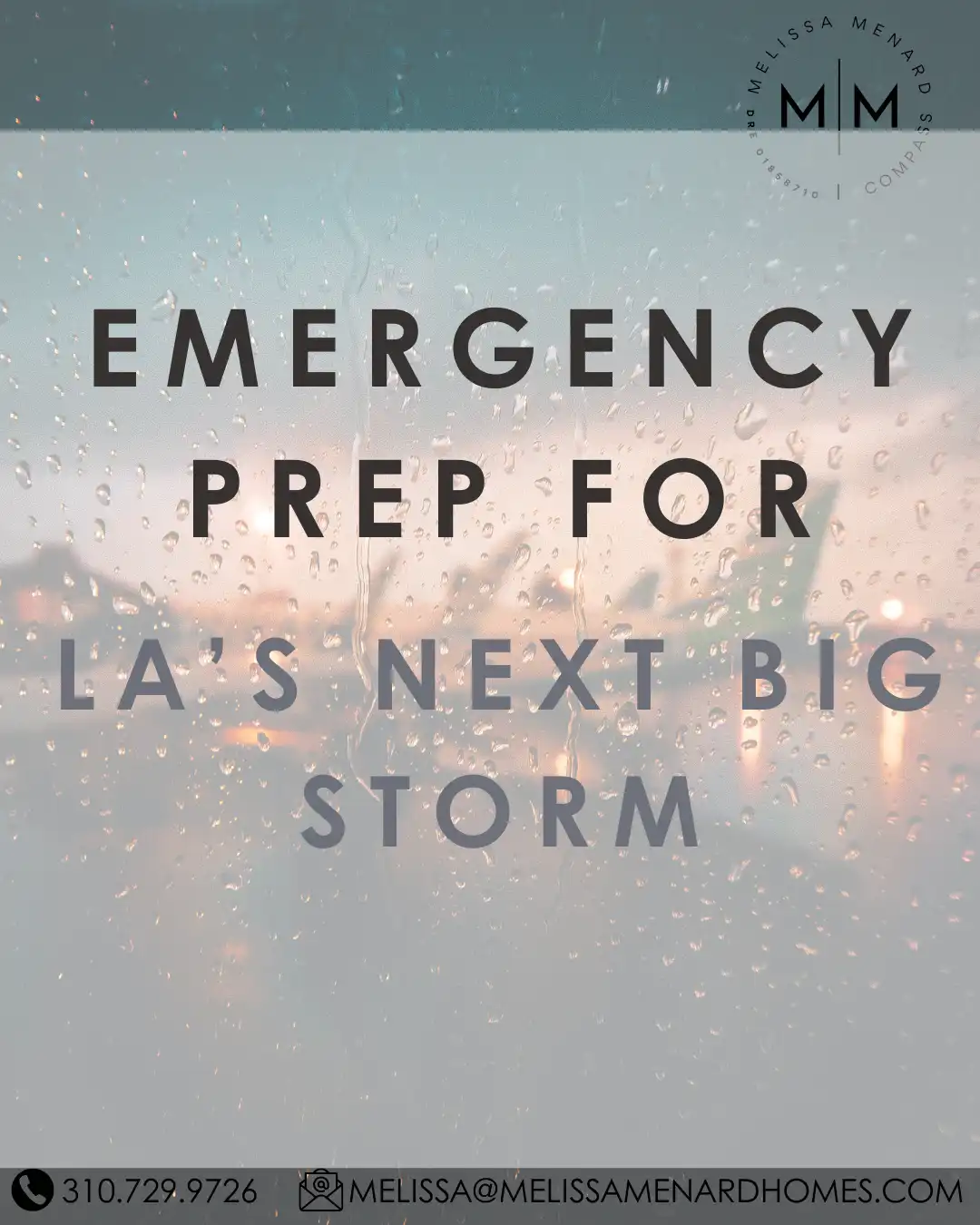
How can you best prepare your home, family, and street for the storm headed to the Greater Los Angeles Area?
With some thoughtful preparation—clearing drains, securing outdoor items, confirming emergency plans and kits, monitoring alerts and helping neighbors—you’ll be far more ready for heavy rain, high winds and potential flooding.
Why “Storm Preparedness Tips” Matter Now
With a significant storm predicted to move into the region, now is the time to act. According to the Los Angeles County Office of Emergency Management, taking proactive steps can reduce risks of flood damage, downed power lines, debris flows and more. ready.lacounty.gov & emergency.lacity.gov
When you turn attention to “storm preparedness tips Los Angeles”, you’re not just protecting your own home—but helping keep your neighborhood safer too.
Start Outside: Securing the Exterior & Yard
- Bring in all loose bins, furniture, décor and planters so they don’t blow away or become projectiles in the wind.
- Check your gutters, yard drains and storm drain inlets: clear debris now so water has a path to run. If you delay, yard drains can back up and create flooding issues.
- If you live near a street storm‑drain and you notice leaves, sticks or trash building up, rake it up or clear tangles (never use your bare hands). You’re helping your entire block.
- Consider sandbags for low‑lying spots or places where water has pooled before. (The City of Los Angeles offers sandbag pick‑up sites.)
By focusing outside first, you reduce the initial damage vector—wind‑blown items, clogged drains, and water entry.
Lock Down the Home Envelope
- Monitor windows and sliders: even high‑quality units can leak when the rain is driven sideways and wind‑lifted. Keep towels or absorbent material ready near frames.
- Secure outdoor/lawn furniture and décor. When the gusts arrive, unsecured items can become hazards.
- Unplug sensitive electronics if you’re concerned about power surges—especially with heavy rain and wind often comes utility instability.
- Know the location of your main shutoffs (water, gas, electric). In the event of flooding or damage, you may need to turn them off to limit risk.
This ensures your structure and valuables are better protected when the storm intensifies.
Power, Lighting, Devices & Communications
- Check your flashlights, batteries, charging cords and any backup power sources. If the lights go out, you’ll want reliable lighting.
- Keep phones and devices charged. If power goes out, your communication options narrow quickly.
- Register for local alerts. The city’s emergency management website encourages signing up to receive text, email and phone‑call alerts via systems like NotifyLA. emergency.lacity.gov & ready.lacity.gov
- Remember: assume any downed power line is live and dangerous. Do not approach or attempt to move it—contact the utility immediately.
Being prepared with light, charge, and alerts keeps you connected and safe.
Your Emergency Kit & Family Action Plan
- Does your home kit include: water (1 gallon per person per day), non‑perishable food, first‑aid items, blankets, extra shoes, a small tool kit? The county’s “Get Prepared” checklist highlights these. ready.lacity.gov & LADWP.com
- Create (or review) your emergency action plan. You should have two:
- One for when you’re all at home.
- One for when you’re not all together (work/school split).
- Key elements: meeting spots (one near your neighborhood, one further away), emergency contact point, and roles for each person.
- Know how to disengage your garage door motor in case of power outage and you need quick exit.
- Equip pet‑friendly preparation: bring pets indoors during the storm, and include them in your kit and plan.
Having the kit and plan forefront ensures you’re not scrambling when the rain is at its worst.
Driving, Drains and Neighborhood Cooperation
- Avoid driving if possible during the heaviest rain or when road conditions are poor. The LA County site warns that as little as six inches of moving water can knock an adult off their feet—and 18–24 inches can carry away most SUVs. ready.lacounty.gov & LATimes.com
- During the storm, be alert for street flooding, tree debris, blocked drains and failing infrastructure.
- Reach out to your neighbors. Someone may be unable to manage a downed branch or clear a drain—offer a hand. Community resilience starts with neighborly cooperation.
By staying alert and assisting others, you help reduce risk for everyone.
Real‑Time Monitoring, Alerts & What to do if There’s Damage
- Keep tabs on official storm updates: the county’s emergency portal and the National Weather Service (NWS) Los Angeles office. emergency.lacity.gov & LATimes.com
- Life‑threatening situations? Call 911. Non‑life‑threatening issues (flooding, fallen trees not causing immediate danger) can go through 311 in the City of Los Angeles. emergency.lacity.gov
- Downed power lines? Stay at least 100 feet away and report them to the utility (do not assume they’re safe). Ready LA County
After the storm: inspect your home’s exterior for leaks, check your drains again, and document any damage with photos in case you need to contact your insurance.
If you’re buying or selling a home in the storm‑season risk zone
As a real‑estate professional in the Greater Los Angeles Area, I sometimes walk clients through home‑maintenance readiness—especially in storm‑vulnerable zones. Here’s how your preparedness also ties into home value and market perception:
- Buyers appreciate homes where the exterior (gutters, drains, landscaping) is in good shape—especially in rain‑prone areas.
- Sellers who highlight “storm‑ready” features (secure outdoor space, functioning drains, alert registrations) can add credibility.
- If you’re listing soon, this is a fine moment to mention your property’s readiness for storms—clean drains, secured yard, good neighborhood support.
Staying ahead of the storm helps protect today—and protects your home investment.
Final Takeaway
Storms in the Greater Los Angeles Area bring more than just rain—they bring wind, flooding risk, debris flow and utility disruption. By acting now, you’re turning “storm preparedness tips” into real protection for you, your home and your neighbours. Clear the drains, secure loose items, check your emergency kit, set up your plans and stay connected via alerts. And don’t underestimate the power of community—when you help your neighbours, you help yourself.
Melissa Menard REALTOR® | Compass
The Greater Los Angeles Area
📞 310.729.9726 | DRE# 01858710
📧 melissa@melissamenardhomes.com
🌐 www.MelissaMenardHomes.com

